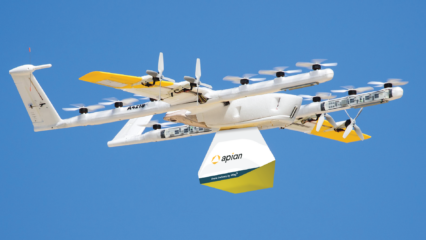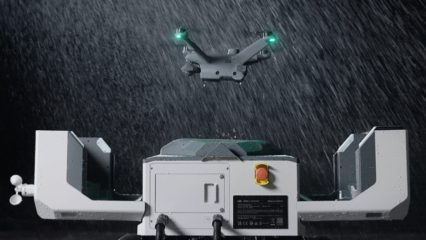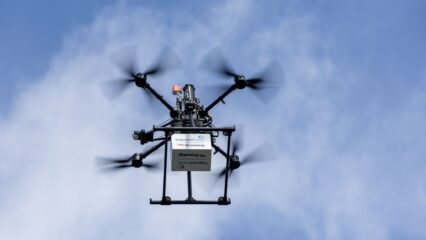What the DJI ban means for drone-based public safety and law enforcement drone programmes in the US

As the fallout ignited by the looming ban on DJI drones from operating in the US continues, a public safety non-profit organisation has sought to appraise hundreds of its members on the situation obtaining in the US right now, in as far as the fate of DJI drones is concerned and what this means for the deployment of the condemned drone technology going forward.
The Law Enforcement Drone Association (LEDA) – a non-profit entity which conducts training with both established law enforcement UAS teams, as well as agencies with a desire to start public safety UAS programs – has had to respond to concerned members who are not sure how to proceed with the fleet of DJI products in their inventories.
Created by law enforcement officers to develop a standard of training and best practices in the field, the LEDA is gathering worldwide renown as an association, with over 700 law enforcement organisations and agencies represented worldwide.
During training, LEDA partners with various drone manufacturers, software companies, and other vendors to bring product demos when possible, so members can get hands-on experience with technology that will push their programs forward.
One of those partners is now set to be sidelines, as one of the DJI ban bills passed the US House of Representatives last week, leaving many a public safety and law enforcement official with many questions.
In the US, law enforcement organisations will – alongside other federal organisations that include fire and emergency services – be one of the most affected entities by the DJI ban; and it is in this light that Jon Bel, the association’s president and CEO, sought to update his organisation’s members on what current development mean for law enforcement and future relations with DJI drone technology.
The letter is below.
We understand there are growing concerns regarding recent legislative efforts aimed at restricting the use of Chinese-manufactured drones within law enforcement agencies.
To provide clarity on the current status and implications of these developments, we address key points below:
Current Status of the Countering CCP Drones Act
Not Yet Law: The Countering CCP Drones Act (CCCPDA) has been proposed but has not become law. It has only been introduced into the National Defense Authorization Act (NDAA) for Fiscal Year 2025 by the House Armed Services Committee. As far as we have been told, it has not been introduced into the Senate NDAA yet, which is necessary for the bill to move forward. The Senate committee hearing is done in secret and we will not know the results of that meeting for at least a few days to up to a few weeks.
Legislative Process: For this act to become law, it must pass through both the House of Representatives and the Senate and be signed by the President. This process can be lengthy and is subject to extensive debate and amendments.
Details of the Proposed Legislation
Focus on Future Acquisitions: The CCCPDA language targets the FCC licensing of new drone models from DJI and does not require the FCC to revoke FCC licenses on current drone models from DJI. This would prevent DJI from releasing a “Matrice 400” or a “Mini 5” in the United States but does not “brick” the DJI drones you already possess.
Fruits of the Poisonous Tree: If the bill passes, it is speculated that the FCC possibly could revoke current FCC licenses on current models without congressional approval, which would render your current DJI drones as unlawful.
The bill does not require this step by any means, but if this were to occur, then any evidence collected on your law enforcement missions could be considered “Fruits of the Poisonous Tree” and thrown out in court since you would have obtained that evidence unlawfully. We do NOT believe it would come to this but we wanted to outline the possibility.
No Immediate Impact on Current Fleets: There are NO bills currently being pushed that would actually make your drones unlawful outright. These bills, the CCCPDA and the Drones for First Responders Act (DFR), are attempting to prevent the acquisition of future Chinese drones in the US.
Inclusion in the NDAA for 2025
Preliminary Stage: The inclusion of this act in the NDAA is an initial step. The NDAA is a complex legislative package addressing various aspects of defense and security policy. Its final form will evolve through the legislative process. Introduction into NDAA with this bill language is kind of a back door to get the language into law without the bill standing on its own, which it has struggled to do and obtain support.
Awaiting Further Action: The bill must still be debated and voted upon by both chambers of Congress, meaning final decisions and potential changes are pending.
The DFR Act
Proposed Tariffs and Future Ban: The DFR Act proposes implementing tariffs on drones imported into the U.S. that contain components from Chinese manufacturers. It aims to gradually phase out the use of these drones, leading to a complete ban on future purchases by 2030.
Creation of a Grant Program: The act includes provisions to establish a grant funded by the tariffs imposed on these imported drones. This grant is intended to support the acquisition of non-Chinese drones by first responders.
Risk of Unfunded Grants: The effectiveness of the grant program depends on the collection of tariffs. If companies like DJI license their technology to US companies and source components from allied nations to avoid tariffs, the funding for these grants could be significantly undermined.
Implications for Law Enforcement Operations
Operational Continuity: You can continue using the drones currently in your fleet without any immediate restrictions due to the proposed legislation. There is no need to dump your current fleets or not purchase Chinese drones at this time. You WILL still be able to use them unless future state regulations forbid it.
Future Planning: It’s prudent to consider potential fleet diversification and suppliers for future drone acquisitions if the Countering CCP Drones Act passes in its current or modified form. Also, be aware of the potential phase-out timeline proposed in the DFR Act for drones with Chinese components.
We’re unsure if either of these bills will pass and as a standalone they are not so far, but it’s always good to know what’s happening legislatively. If you’re still unsure about what you’re able to do when looking to purchase drones, please reach out to us at info@ledauas.org and we will update you on as much current and pending legislation as we can.
Next Steps and Member Engagement
Stay Informed: We will keep you updated on significant developments regarding these legislative proposals and their progress through Congress.
Advocacy and Feedback: We encourage you to engage with your local and federal representatives. Your input is crucial in shaping policies that affect law enforcement capabilities. For more information and to find tools to contact your representatives, visit the Drone Advocacy Alliance’s website.
Another Write-Up on the Matter: Vic Moss, the president and CEO of the Drone Service Providers Alliance and President of the Drone Advocacy Alliance penned a similar update outlining further detail about the bill proposals and status.







0 Comments